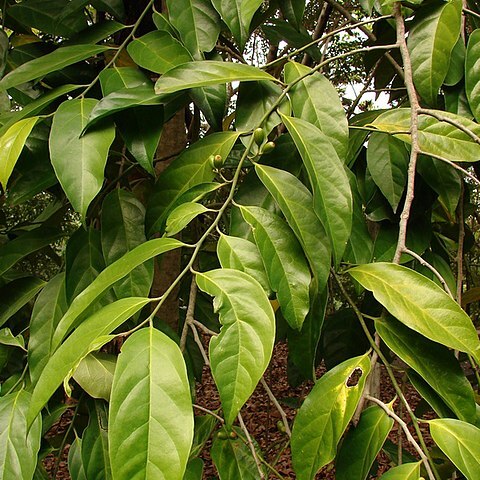Tree 5-20 m tall. Branchlets appressed-puberulent with grey hairs, glabrescent. Leaves distichous on lateral branchlets, elliptic, ovate or ovate-lanceolate, shortly acuminate, rounded; lamina mostly 13-24 cm long and 5.5-9.5 cm wide; base cuneate or slightly decurrent; secondary veins 5-8 pairs; petiole 10-13 mm long, glabrescent. Cymes 2-3.5 cm long, appressed-puberulent with brown hairs. Calyx 1-1.5 mm long, ±glabrous. Petals united into tube 2.5-3 mm long, glabrous; lobes deltoid, c. 1 mm long. Male flowers: stamens slightly exserted, glabrous; filaments 3-4.5 mm long; anthers c. 1 mm long; staminodes present; rudimentary ovary conical, c. 1 mm long, glabrous. Female flowers: ovary 1-locular with 2 ovules, c. 3 mm long, glabrous; stigma c. 2.5 mm diam. Drupe ellipsoidal, 2-2.5 cm long, 1.2-1.5 cm diam., salmon pink; exocarp thin; mesocarp 1-2 mm thick; endocarp thinly woody, with 12-15 longitudinal ridges, c. 0.4 mm thick.
A tree. It grows 6-25 m tall. It can have buttresses 3 m tall. The trunk can be 30 cm across. The leaves are 14-21 cm long by 5.5-8.5 cm wide. The fruit are oval and 2-2.5 cm long by 1.2-1.5 cm wide.


